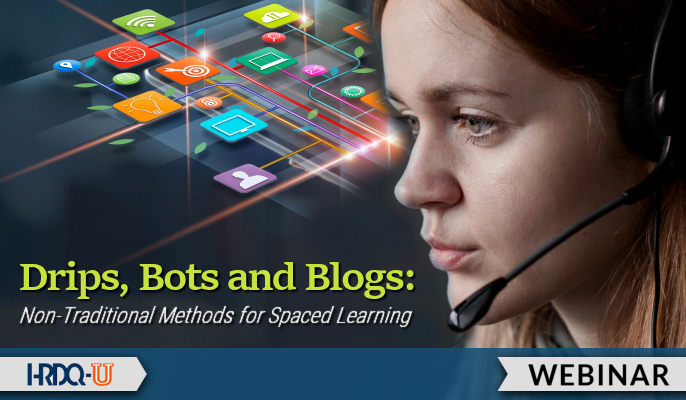- 827 Lincoln Ave. #B-10 West Chester, PA 19380
- support@hrdq.com
- +1-610-279-2002
Quick Links
Menu
Featured Topics
Menu
Total Results
We could not find what you're looking for. Please try again.No Record Found

In a recent Bersin by Deloitte report, it was stated that 80% of CEOs believe upskilling is their most pressing challenge. A Manpower report states that 69% of U.S. companies report talent shortages. This reaffirms the message that retraining and upskilling are critical to the modern workforce.
However, large workloads and packed schedules impose a barrier to providing the learning needed to address the upskilling needs of today’s hybrid workforce. The workforce of today requires people to learn on the go. It also requires giving people the ability to control when and where they participate in their professional development. For the learning professional, this means delivering support and reinforcement programs that are produced in manageable bites, giving people a chance to reflect and apply lessons without disruption to the workflow.
By providing spaced learning through dripped applications, we give knowledge a greater chance of sticking and give the people a better chance of knowledge application. By doing so, we create a win-win for the people and the business.
Here, we will be working with three common drip delivery platforms: email, blogs, and chatbots to demonstrate the combined value of chunked and self-directed microlearning content.


As owner of Learning Rebels, Shannon Tipton is a skilled learning strategist and international speaker focusing on learning disruption. Shannon has 25+ years of experience developing successful infrastructures and providing upskilling for L&D departments in North America and Europe. Recognized as bringing real-world expertise into the learning field, Shannon develops frameworks and tools to support learning technologies, microlearning, and learning reinforcement to ensure business results.
As the author of Disruptive Learning, Shannon speaks internationally and her top 100 blog “Learning Rebels” can be found at learningrebels.com.
Training Tools for Developing Great People Skills
This event is sponsored by HRDQ. For 45 years HRDQ has provided research-based, off-the-shelf soft-skills training resources for classroom, virtual, and online training. From assessments and workshops to experiential hands-on games, HRDQ helps organizations improve performance, increase job satisfaction, and more.
Learn more at HRDQstore.com

Sign up to be notified of upcoming live webinars, in-depth workshops, podcasts, blog posts, promotions and much more. Stay ahead of the curve and subscribe for FREE today!